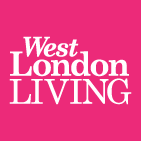3D printing technology and offering practical support during a global pandemic don’t form an immediate association. However, the technology has, behind the scenes, supported a number of different community projects in London in the fight against COVID-19. It has also seen many London businesses and projects come to the fore and demonstrate the means they have to rapidly produce urgent medical equipment.
It has been one of the key manufacturing methods of production for critical Personal Protective Equipment used in hospitals, care homes and other places of work. Unlike, conventional paper printing, 3D printing is a process for making a physical object using computer-aided design. It prints the desired object layer by layer to create a 3D part or component, producing less waste than many other traditional manufacturing methods with a high level of accuracy and a quick turnaround time for making prototypes.
With time playing a critical role in the fight against the pandemic, the benefits of 3D printing have been showcased many times since the effects of COVID-19 began.
Queen Mary University London
In April 2020, as lockdown measures came into force, a group of clinicians, researchers and staff from the Queen Mary University of London joined forces to 3D print PPE to help with shortages. The one-piece visors, which protect against droplet transmission, provided protection to the face and neck of health workers. Barts Health and Infection Control team approved the equipment for use in the emergency depart and other wards.
Guy’s and St Thomas’ NHS Trust
In a similar project, hospital trust, Guy’s and St Thomas’ teamed up with a number of 3D printing services to manufacture 1500 visors. The project saw around 200 3D printing machines working around the clock so they could share the equipment with a series of other NHS hospitals in need of urgent equipment for their frontline staff. Volunteers, including members of the 3D printing community, students and hospital staff stepped forward to fit the equipment together.
Boosting mask production
Again, in April 2020, London-based 3D printing company, Absolute Print made hundreds of masks for healthcare workers. The two partners who run the business used 3D printing to produce the masks, and later purchased a computer numerical control router funded by £2500 raised by a crowd funder to help them increase the volume. At the time, they supplied 600 visors to Royal Free Hospital, 60 each to nurses and Islington Council. They also produced masks for a care home in Barnet and offered their masks to Whittington Hospital and Holloway Bus Garage.
Accelerating PPE assembly
Another London-based 3D business, 3DPRINTUK, created a design for face shields using Selective Laser Sintering (SLS). The design concept was created to enable masks to be stacked in large batches, averaging six minutes of production time for each one, according to the company’s MD, Nick Allen. The unique lightweight design with adjustable silicone straps allowed for a swift assembly time of around 10 seconds. The company collaborated with the Arts University Bournemouth to make the shields for key workers.
Collaborating to speed up PPE production
Working group, SHIELD (Sustainable Hub for Innovation, Execution, Launch and Distribution) brought 3D tech, health, engineering and construction professionals together to expedite the production of ventilators, gowns, and other medical devices for NHS frontline staff. One of the hubs it set up was Makerversity in London, with the aim of producing 1700 visors a day. The National 3D Printing Society, Helpful Engineering and Women in 3D Printing also formed part of the group.
Face visors for Nightingale Hospital
Two mechanical engineers, Dr Alex Fergusson and Dr Declan Carolan used 3D printing technology to help produce visors for medical staff after receiving a request from the Nightingale Hospital in London. The visors were to be used to help train the staff at the hospital when putting on and removing PPE safely. The two visiting lecturers at the Department of Mechanical Engineering at Imperial volunteered their time to make the visors themselves.
Miniature 3D printed pop up food banks
As the effects of the pandemic remained with us throughout 2021, another company also did its bit for London. Designed by local artist, Sean Rodrigo, small handmade replicas of well-known buildings were spread across Walthamstow, serving as mini food banks with shelves inside to receive donations. The detailed designs included copies of the Nag’s Head pub and Wood Street Indoor Market, and included detailed features such as curtains, street signs, post boxes and flowers, the interiors even included wallpaper designed by William Morris. The building replicas contained a QR code providing more information for passersby and when the food bank is full, users press a button inside which triggers an alert for volunteers to take the donations to a food bank run by charity PL84U Al-Suffa.








